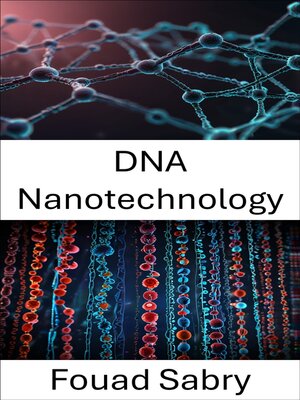DNA Nanotechnology
ebook ∣ Engineering Molecular Architectures for Nanoscale Innovation · Nanobiotechnology
By Fouad Sabry

Sign up to save your library
With an OverDrive account, you can save your favorite libraries for at-a-glance information about availability. Find out more about OverDrive accounts.
Find this title in Libby, the library reading app by OverDrive.



Search for a digital library with this title
Title found at these libraries:
| Library Name | Distance |
|---|---|
| Loading... |
In the rapidly evolving field of nanobiotechnology, DNA Nanotechnology stands as a transformative force, bridging molecular biology and nanoscience. This book explores how DNA, beyond its genetic role, serves as a programmable material for constructing nanoscale structures and devices. Essential for researchers, professionals, and students, this book offers a deep dive into the principles and applications shaping the future of science and technology.
Chapters Brief Overview:
1: DNA nanotechnology – Introduces the core concepts of DNAbased nanostructures and their potential applications.
2: Nucleic acid design – Explores the principles of designing DNA and RNA for structural and functional use.
3: Holliday junction – Discusses the role of this fourstranded structure in DNA assembly and nanodevices.
4: Nanoruler – Examines DNAbased rulers for precise molecular measurements in nanobiotechnology.
5: DNA walker – Highlights programmable molecular machines driven by DNA hybridization.
6: Robert Dirks – Recognizes contributions to nucleic acidbased computing and selfassembly.
7: Nucleic acid secondary structure – Explores how DNA and RNA folding influence nanostructure formation.
8: Spherical nucleic acid – Details the unique properties and applications of 3D DNA nanoparticle structures.
9: Peptide nucleic acid – Examines synthetic DNA analogs for molecular recognition and therapeutics.
10: DNA – Discusses the fundamental molecule of life as a tool for nanoscale engineering.
11: TectoRNA – Explores RNAbased building blocks for selfassembling nanostructures.
12: Biomolecular structure – Analyzes how molecular architecture influences function at the nanoscale.
13: Cees Dekker – Highlights research on DNA nanodevices and singlemolecule technologies.
14: M13 bacteriophage – Examines virusbased scaffolds for DNA nanostructure assembly.
15: Nanotechnology – Provides an overview of nanoscale innovations across multiple disciplines.
16: DNA origami – Details the revolutionary method of folding DNA into programmable shapes.
17: DNA computing – Discusses DNA's potential for parallel computing and problemsolving.
18: Molecular selfassembly – Explores the fundamental process driving DNA nanostructure formation.
19: Nadrian Seeman – Recognizes the pioneer of DNA nanotechnology and his groundbreaking work.
20: RNA origami – Examines RNAbased folding techniques for nanoscale design.
21: Molecular models of DNA – Explores computational and physical models for understanding DNA structures.
Beyond theoretical insights, DNA Nanotechnology equips readers with practical knowledge to explore new frontiers in molecular engineering. Whether you are an expert, student, or enthusiast, this book provides a solid foundation in the principles shaping the future of DNAbased innovations.







